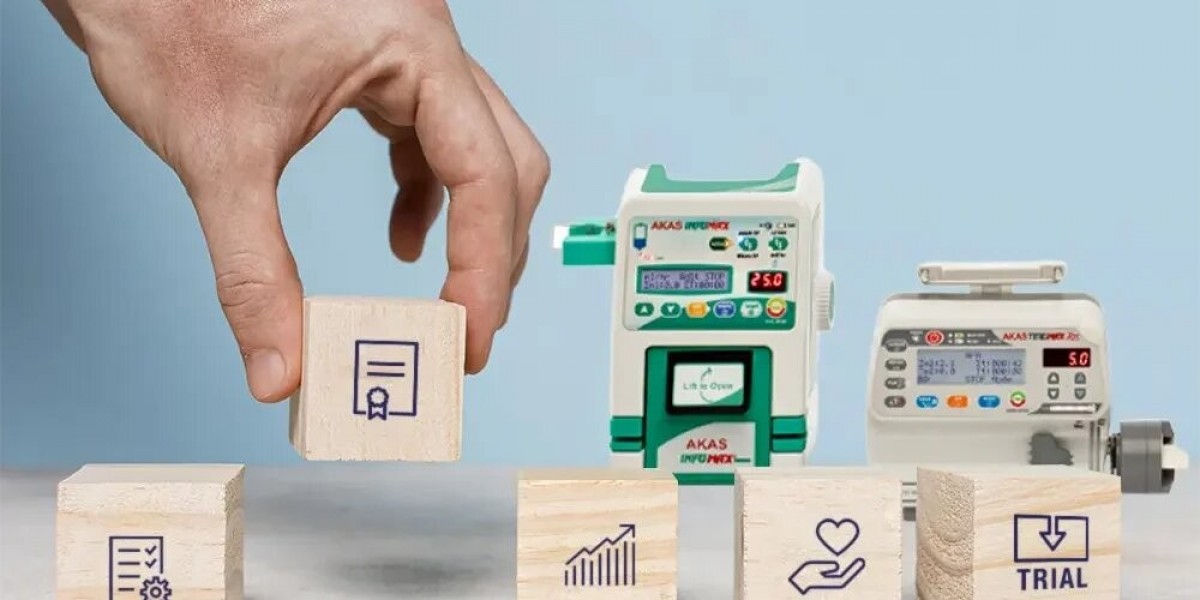Alarm systems are the unsung heroes of modern hospital care.
Every beep, chime, or flashing signal from a medical device carries meaning. But when too many alerts go off at once—especially those that are non-critical—it can lead to alarm fatigue. For caregivers under pressure, this becomes not only overwhelming but potentially dangerous. The right Infusion Pump with a smart alarm system can make a life-saving difference.
An infusion pump is designed to deliver fluids, medications, or nutrients with accuracy. But the safety of these devices hinges on the ability to detect and signal problems—such as occlusions, empty bags, or flow inconsistencies. Without an intelligent alarm system, these critical alerts risk being ignored amid a sea of non-urgent sounds.
The purpose of a smart alarm is not just to notify but to prioritise and support.
The Challenge of Alarm Fatigue in Hospitals
Alarm fatigue occurs when clinicians become desensitised to frequent alarms.
This is often caused by a high volume of non-actionable or nuisance alerts. In the context of infusion therapy, these may include minor air bubble detections, flow rate variances within tolerance, or temporary occlusions that self-resolve.
When alarms go off too often, care teams may:
Become slower to respond to genuine emergencies
Disable or mute alarms unintentionally
Develop frustration or inattentiveness towards device notifications
The result can be missed alerts, delayed interventions, and increased patient risk.
Smart Alarm Technology in Infusion Pumps
Modern Infusion Pump systems use advanced algorithms and sensor integration to minimise fatigue.
These systems are capable of detecting the difference between critical and non-critical issues. Through adaptive features, smart pumps help hospitals provide safer care with fewer interruptions.
Key smart alarm features include:
Priority-Based Alerts
Differentiates high-risk alerts (e.g., occlusion or empty syringe) from minor ones
Enables faster response to events that require immediate attention
Alarm Delay Settings
Reduces false positives by applying a short delay to transient conditions
Avoids sounding alarms for minor fluctuations that self-correct quickly
Visual and Audible Distinction
Uses different tones, colours, or icons to classify alarm urgency
Supports intuitive recognition by caregivers at a glance
Alarm Histories and Logs
Tracks past alerts for review and performance improvement
Helps biomedical teams assess device behaviour over time
Customisable Thresholds
Allows hospitals to tailor alarm sensitivity to their clinical workflow
Ensures the infusion pump complements, not disrupts, patient care
Benefits of Smart Alarms in Clinical Settings
Hospitals that adopt infusion pumps with intelligent alarms report measurable improvements.
These benefits not only protect patients but also uplift the working conditions of frontline staff.
Smart infusion pump alarms offer the following advantages:
Reduced Nurse Burnout
Fewer unnecessary alerts improve concentration and mental clarity
Enhanced Patient Safety
Critical conditions are flagged quickly and clearly
Operational Efficiency
Devices require fewer manual interventions, saving clinical time
Improved Compliance
Fewer alarm overrides lead to better documentation and adherence
Peaceful Healing Environments
Quieter wards support patient rest and recovery
By removing distractions without sacrificing safety, smart alarms empower hospitals to balance efficiency with excellence.
What to Look for When Choosing an Infusion Pump
Selecting the right Infusion Pump involves more than reviewing technical specs.
A good infusion pump must fit within the human system of care: the workflow of nurses, the responsiveness of biomedical teams, and the safety needs of patients.
Procurement teams should consider:
Alarm Priority Grading
How clearly are different alarm types categorised?
Sensor Sensitivity and Accuracy
Does the pump reliably detect genuine clinical risks?
Usability and Interface Design
Are alarm messages clear, readable, and understood easily by staff?
Maintenance and Calibration Needs
How often does the alarm system require checks or software updates?
Integration with Hospital Systems
Can alarms trigger notifications on nurse call systems or EHR platforms?
Support and Training
Does the manufacturer provide adequate guidance for setup and training?
The goal is not just to choose a pump—but to invest in a solution that supports safe, continuous care.
Conclusion
Infusion pumps are at the heart of modern drug delivery in hospitals and clinics.
When equipped with intelligent alarms, these devices become even more effective at protecting lives—without overwhelming the professionals who operate them. Reducing alarm fatigue is not just a feature; it’s a commitment to safety, respect, and clinical balance.
Manufacturers like Akas Infusion are leading the way in building world-class drug delivery devices, including advanced volumetric infusion pumps that integrate seamlessly into modern hospital care. With smart alarm systems, intuitive interfaces, and a strong focus on precision, their solutions support clinical teams in providing the highest standard of treatment.








